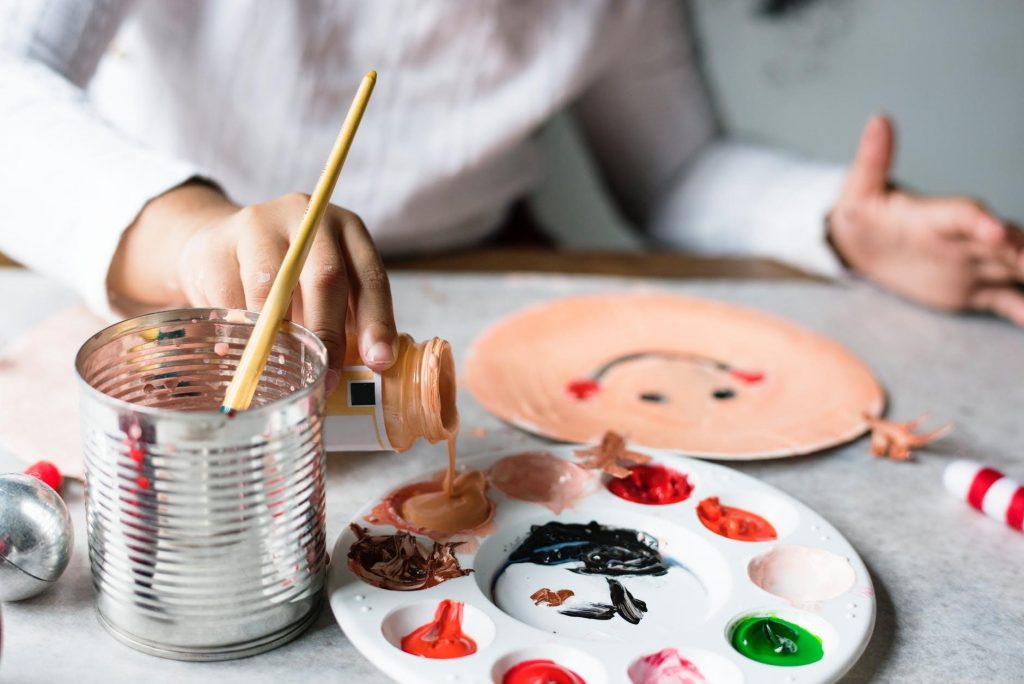Our guest blogger this month is Lillian Brooks of Learning Disabilities Info. Learning Disabilities Info is an online resource that was created to offer information and understanding to parents of children with learning disabilities, as well as adults who are in need of continued support to succeed. This article aims to give parents and educators some valuable advice on how to get children involved in the arts and discover how creative play can boost a child’s self-esteem and wellbeing.

Getting Your Child with Learning Disabilities Involved in the Arts
For children with special needs, it can be difficult to engage in what are usually considered to be average childhood activities. The arts are a prime example of this. While it might seem like any child can pick up a paintbrush or take a music class, for children with special needs, even this can be difficult. Each child has their difficulties, and when your child has special needs, these difficulties are often amplified. Still, getting involved in the arts has many benefits for children with learning disabilities. To help your child become involved, follow these steps.
Discover Your Child’s Strengths
Your goal of getting your child involved in the arts should not be to level out their weaknesses. Instead, your goal should be to enhance their strengths. Every child has their own gifts and interests, and children with learning disabilities are no different. While children with certain learning disabilities might have trouble reading and writing, the arts can allow them to find equal footing with their peers and build self-confidence.
However, children with learning disabilities are prone to self-esteem problems. Throwing them into an activity they are not set up to succeed in can turn them off from the arts altogether. For the first art activity you provide, you should be sure that it plays to their strengths to give your child the best possible chance to succeed. For instance, if your little one has difficulty with sensory overload, sewing might be a perfect fit. Children can create textile art on their own in a quiet space and follow a pattern to make something they’re proud of, such as a magical pillowcase or a hat, without feeling overstimulated by a material like messy, colorful paint.
Experiment with Different Activities
The arts can be a whole lot more than just painting or modeling something with clay. For example, dance can be a great way for a child with learning disabilities to de-stress after a long day. Children with learning disabilities commonly are more at home in their body and movement than they are with concentrated, quiet activities. Dance allows them to experience a group activity that is very natural and free from physical restriction.
Music can also be greatly beneficial for children with learning disabilities. According to Valotta Studios, music uses more of your brain than any other activity, which can sharpen your mental capacity and help you focus. Music can also benefit your child if he or she has problems with sensory problems. The rhythmic nature of music can allow your child’s senses to be calmed and provide him or her with the capacity to more easily deal with sensory input in the future. While the stereotypical image of children in music class consists of properly seated children all attentively listening to the teacher, not all music classes are like this. Look for classes designed for those with disabilities,or opt for one-on-one lessons.
You should also take care to choose an instrument that fits your child’s tastes and strengths. Drums might be a good choice if your child can’t sit still, or perhaps a trombone if your child has difficulty with fine motor skills.
Keep at It!
It is very common for a child to not like their first art-related activity. Maybe your child discovers that they do not like playing an instrument as much as they thought they would, or maybe painting is more stress-inducing than calming. Even if your first attempt fails, it is important to keep trying and encourage your child to attempt a number of different activities.
Getting your child involved in a new activity can lead to a lot of questions and concerns. Still, the arts are greatly beneficial to all children, including those with learning disabilities. Following these steps and paying attention to your child can help you get them off on the right foot.
Understanding A Child’s Needs
If you would like to know more about any of the information contained in this article, please contact Lillian.
Our online QQI Level 6 Child Psychology course will also provide you with the knowledge and understanding of child psychology relevant to childhood education and care settings. It will help you to develop new ideas and competencies which can be utilised judiciously at home or in your workplace and in your interaction with the children and adolescents you live and work with.